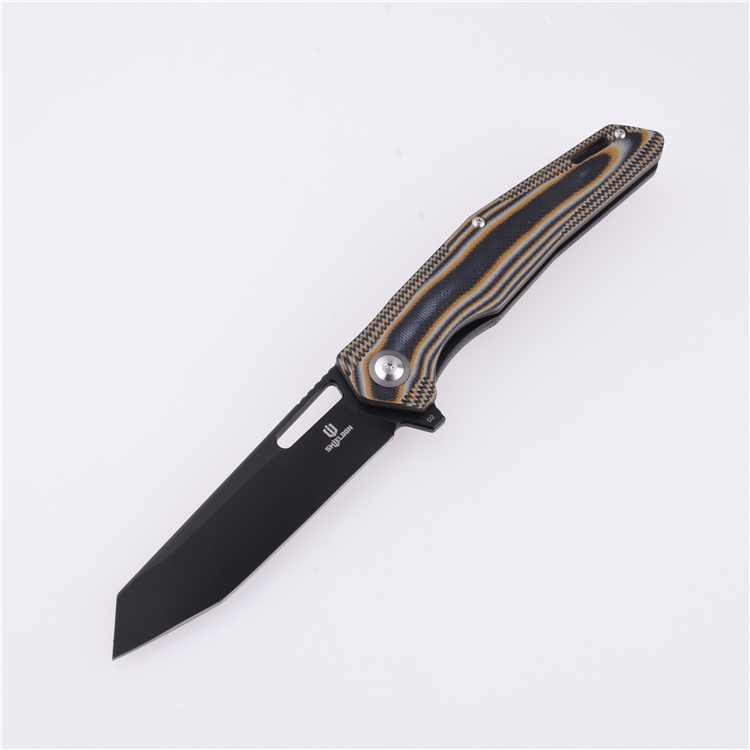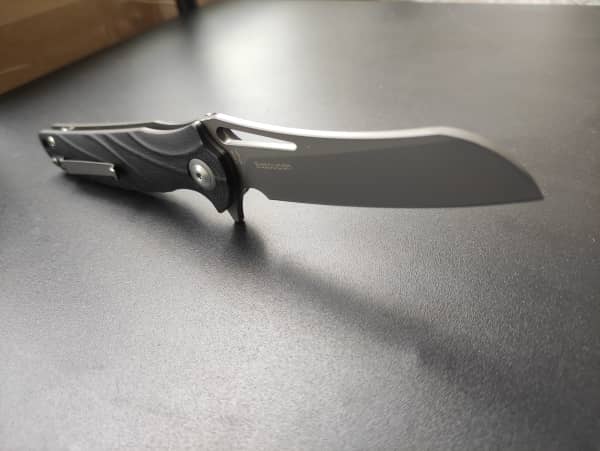OUTDOOR EDGE KNIVES: ARE THEY ANY GOOD?

When compared with indoor knives, outdoor knives are more resilient and are built to last, and this has everything to do with the type of work they are subjected to every day. They have better handles, thicker blades and can be used for a wide range of activities without ever needing any repairs for a very long time.
So, are outdoor knives any good? What are the features that make them more reliable than indoor knives?
These are the questions we are going to briefly look at here for the benefit of anyone who may be thinking of getting their first outdoor knife for a camping or hunting trip. Stick around to the end and learn a few tips that will help you get the right knife.
Features of an Outdoor Knife

There are a number of features that make outdoor knives unique and different from the knife you would find in a kitchen. These features include the following.
Varied Designs
Outdoor knives come in varied designs and shapes, but they can all be grouped into two categories. They can either be fixed blades or pocket knives. Fixed blades are bigger and heavier and are more suited for complicated and intensive tasks when out in the wild hunting or camping.
Pocket knives, on the other hand, are smaller but equally resilient, and they can be carried around as concealed weapons more easily. These two are both built for specific functions in outdoor life, and your choice should be guided by your needs and preferences.
They are Stronger
As much as kitchen knives stay for a very long time with proper maintenance, they cannot last a day if they are subjected to the same conditions that outdoor knives are exposed to. Tasks like cutting ropes, skinning animals, whittling wood, and others require a knife whose blade can stay sharper for much longer and one that cannot break when excessive force is applied to them. This is the reason why many knife manufacturers spend a lot of time researching and developing a knife before releasing it to the public. They have to pass all the endurance tests.
Blade Options
This is the biggest selling point of outdoor knives. Unlike indoor knives that can either be slim or thick or long or short, the number of blade designs for outdoor knives is unlimited. And these blades are not just for show; each design is built for a specific task; a long blade that you would find in a fixed knife is ideal for setting up camp in the woods as it can handle rope cutting or whittling down wood to make tents.
When you think about defensive and tactical pocket knives, they have very thick and short blades that can be whipped out at any moment and can inflict considerable damage to the right hands. We prepared a detailed blade guide that you can use to help your search a little smoother.
Build Materials
The materials used in making outdoor knives are of higher quality compared to what you would find in an average bread knife, for instance. Considering the kind of work that outdoor knives are subjected to, it is only natural that they would have to be made using the most resilient materials known to man.
Most blades are constructed out of stainless steel, high-grade aluminum, carbon fiber, and even titanium. All these have different properties that give them an edge over the others, and The higher you go in terms of quality, the more expensive the knife would be. A titanium blade, for example, is more costly than one made using stainless steel.
Edge Variety
A knife’s edge is one of its biggest assets. The efficiency of the entire knife is wholly dependent on how fast it can cut while ensuring that the user does not come into any form of harm in the process. Outdoor knives have a far more superior knife edge options when compared to other types of knives.
You could go for a fine edge, which is the most common type of blade in the market right now, or you can go for a serrated edge, which you can use for more tasks and doesn't break down or dull very easily. The bottom line here is that you have to go for an option that better addresses your needs.
Handle Material
Outdoor knives require special handles as they have to be used in intensive types of work. Unlike a kitchen knife that is used to chop onions on a board, using a hunting knife to cut through the skin and flesh of an animal you just hunted is not a walk in the park. You will have to apply a lot of force, and if you happen to use a knife with a bad handle, you could end up injuring yourself.
For this reason, outdoor knives are built using handles that have the best grips in the market. They are constructed using all kinds of materials from wood, metal, leather, plastic, and even ivory in some situations. Research and development conducted by most knife makers right now have led to the creation of new materials that are expected to be the future of outdoor knives. Things like advanced cloth fibers, carbon fiber, and polymers are already in the pipeline.
Conclusion
Not to take anything away from indoor knives, as they are just as capable at what they are designed for like any other tool. However, pound for pound, they don’t stand a chance against outdoor knives. The latter is simply superior in any way you look at them. If you are planning to get a hunting or camping knife any time soon but are lost on where to begin, then check out our website and go through our catalog to find something that may fit what you are looking for.
You can also follow us through the following ways:
https://www.facebook.com/ShieldonCutlery
https://www.instagram.com/shieldon_knives_and_tools/
https://www.youtube.com/channel/UC_Dz--HODWHFY4AaUF0z11Q
https://twitter.com/Shieldonknives1/
https://shieldonknivesandtools.tumblr.com/
https://www.linkedin.com/company/72285346/
https://www.pinterest.com/shieldonknivesandtools/
More video introductions:
https://www.youtube.com/watch?v=br9NK4CrTog
https://www.youtube.com/watch?v=SdoMON7UWDM
Article source: Outdoor Edge Knives: Are They Any Good? - Shieldon

